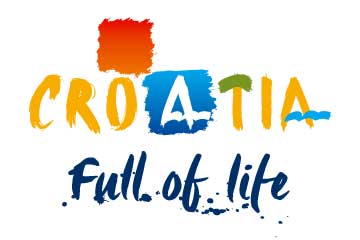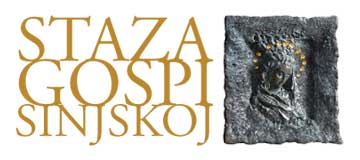Other Sights
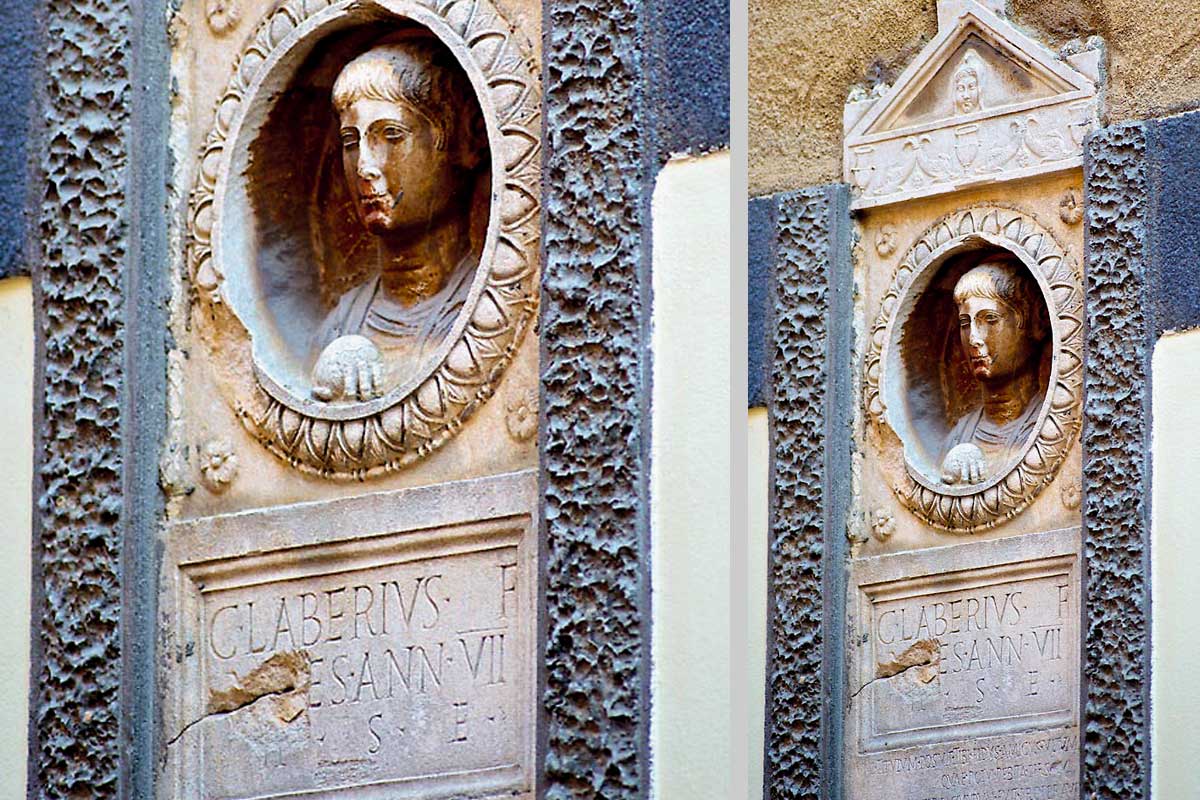
Gaius Laberius
A tombstone of a seven-year-old Roman boy Gaius Laberius holding a ball with hexagons joined in the manner of a net-like ornament. The symbol of a real leather ball, it is considered firm evidence that football in Europe was first played in the Cetinska Krajina Region. It was found in the Tilurium site, in the locality of Gardun, and dates back to the 2nd century.
Today the tombstone is built into the front wall of the Perković family-owned stone building in Vrlička ulica at number 10 in Sinj. Made of limestone, the monument is 113 centimetres high and 46 centimetres wide. At the bottom there is a two-part inscription, the first part of the inscription being in a well-defined frame and informing about Gaius Laberius, whereas the second part is an inscription by an unkonown author dedicated to the boy. The central part is a round medallion framed with ornaments, bearing a portrait of the boy who holds the ball in his right hand. At the top of the monument there is a frieze showing a kantharos (a large two-handle vase), a dolphin and the head of Medusa (in ancient mythology, the personification of evil) and a triangular gable with acroteria (plastic ornaments of tops and corners) in the shape of lion’s paws.
The head of Atis is sculptured in the triangular gable. Even though football was played at Gardun among Roman soldiers and sons of the rich, originally the game was Illyrian and the Delmates had played it long before the Roman troops arrived. This is further proven by the fact that in no locality other than Gardun throughout the historical Roman Empire, a football-related pattern or image has been found. In 1969, the international football association (FIFA) dedicated a cover of its official journal FIFA NEWS (issue 71), headlined Archaeology and football, to the archaeological discovery of the amateur archaeologist Josip Bepo Britvić. According to the FIFA, this discovery is a piece of information significant for both archaeology and football fans. Delmates VS Romans match.
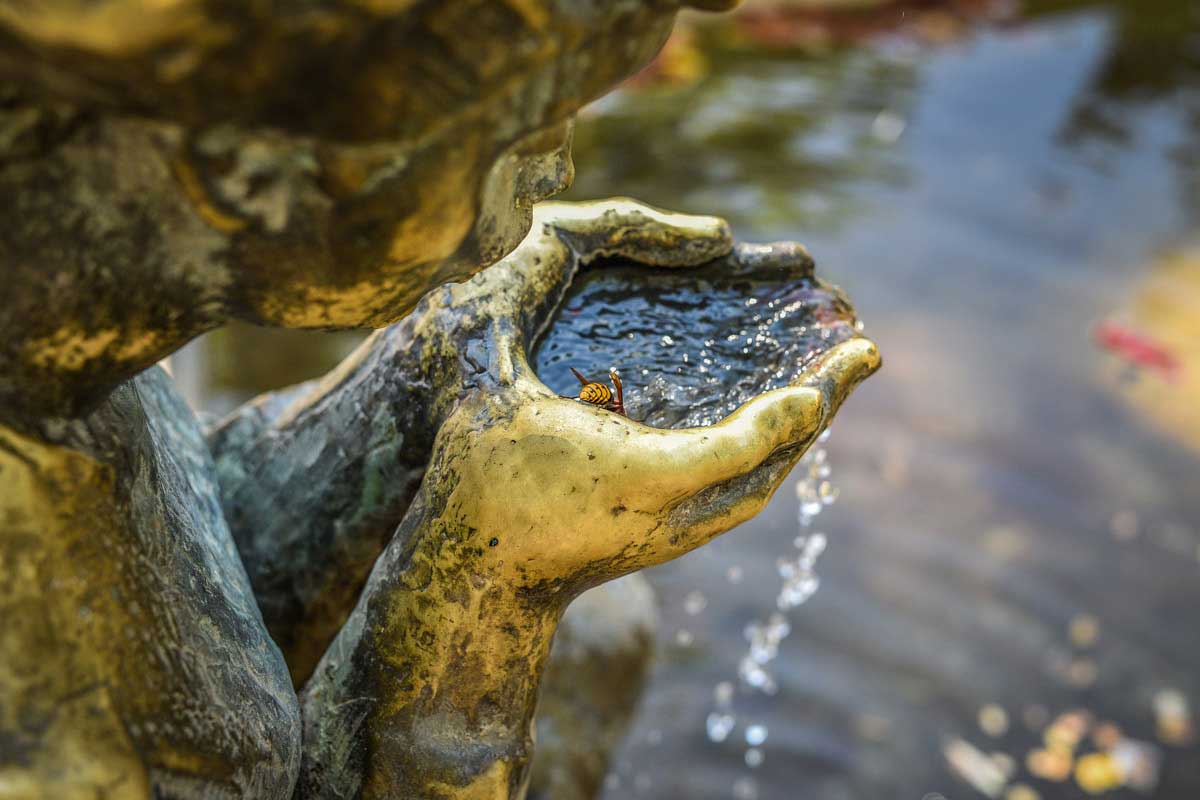
Ivan Alebić
At the Spring
The first public sculpture by Stipe Sikirica (1957), the statue of a girl drinking water from the spring. The people of Sinj call it Luca. The statue is placed in a green space in the town centre, near the Church of the Miraculous Madonna of Sinj.
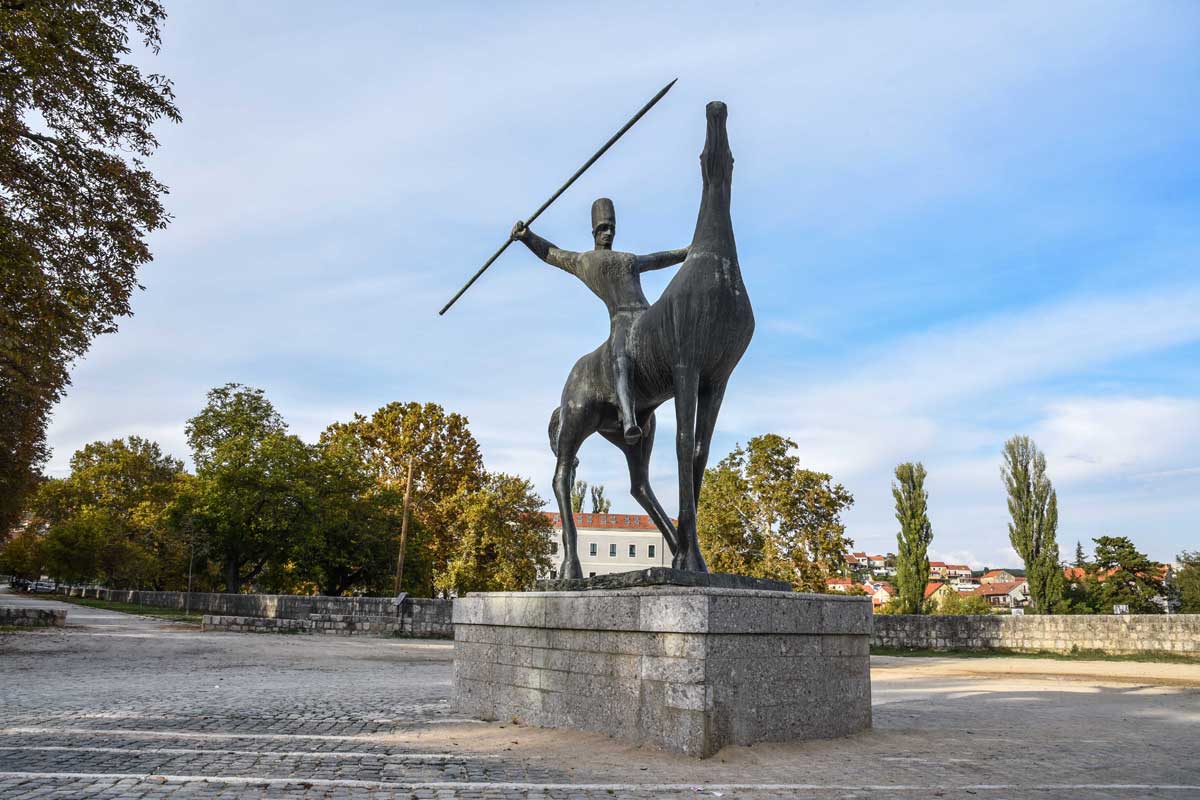
Željko Zrnčić
Monument to an Alkar
One of the most representative symbols of Sinj, a bright sculpture of an Alkar is a work of the academic sculptor Stipe Sikirica. It was set in 1965 at the very beginning of the Alka Tournament Course (Alkarsko trkalište), called Biljeg, a place from which the Alkari start to gallop.
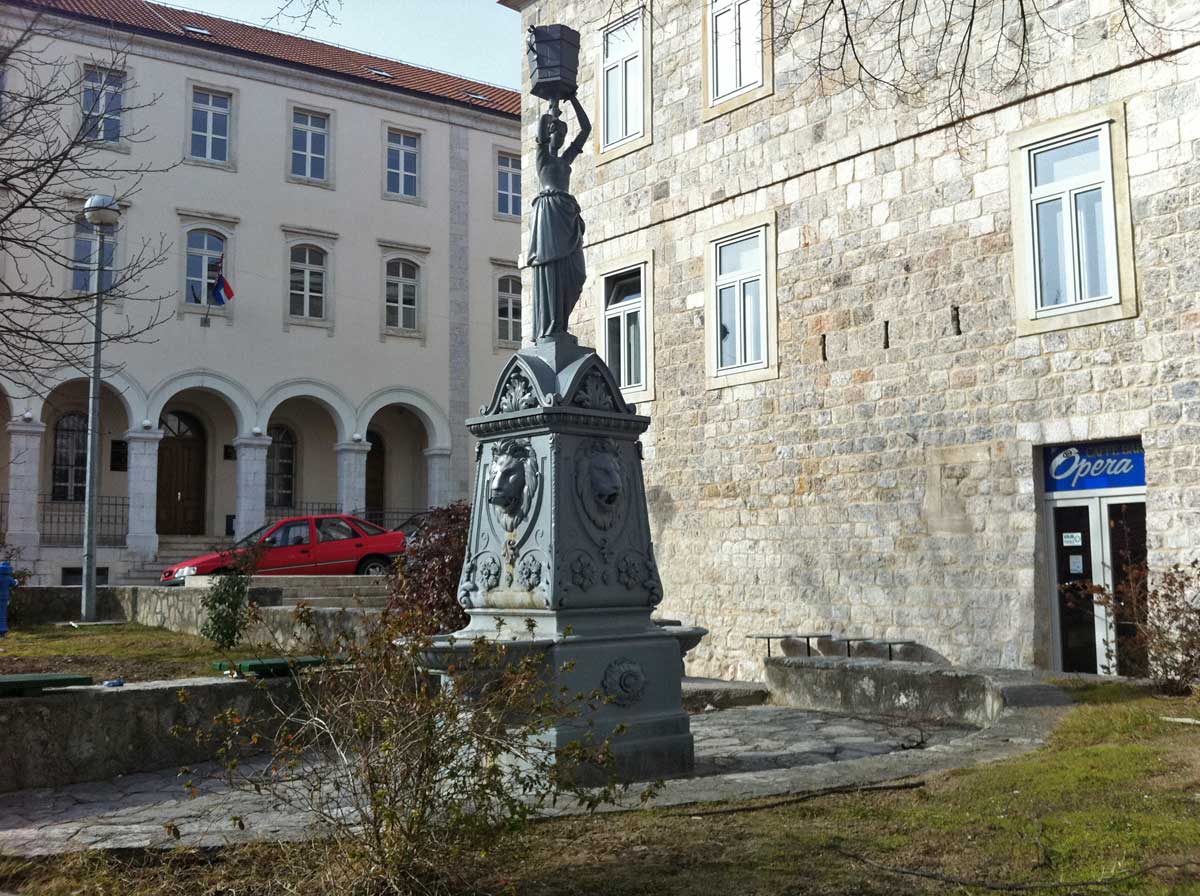
Petrovac Fountain
The fountain, placed in front of the building of Sinj Municipal Court, was raised by Mayor Petar Tripalo in 1878, and it bears his name. It is supplied with water from the Miletin spring, located in the south-west of the old fortress of Sinj.
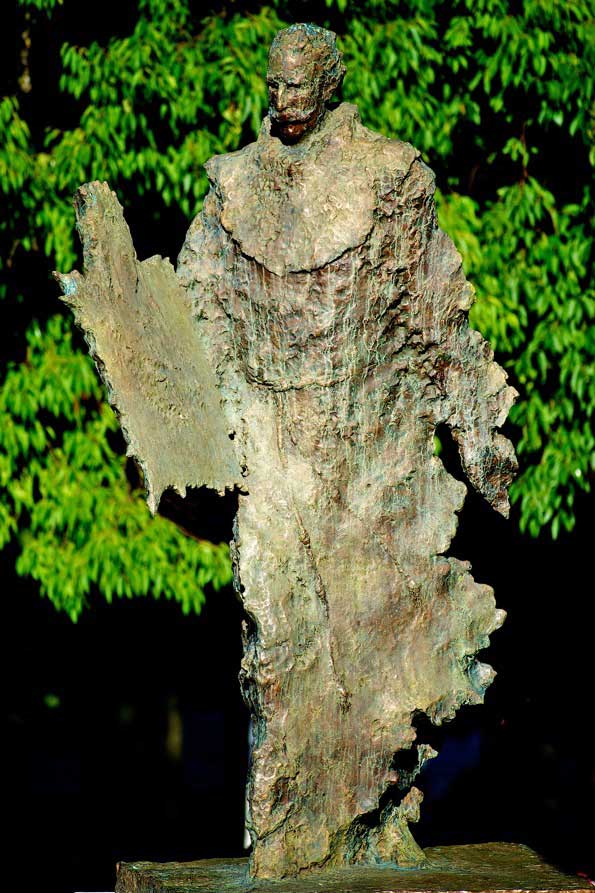
Father Pavao Vučković
The monument to a famous Franciscan is a work of the academic sculptor Kuzma Kovačić. The statue is 2.8 metres high and is placed at the eastern Town gates. Father Pavao is known as the leader of the people of Rama and the Franciscans, for whom Sinj and the Cetinska Krajina Region became a new home in 1687 after they had fled the Ottoman danger, accompanied by the intercession of the image of the Mother of Mercy. He further founded both the monastery and the sanctuary of the Miraculous Madonna of Sinj.
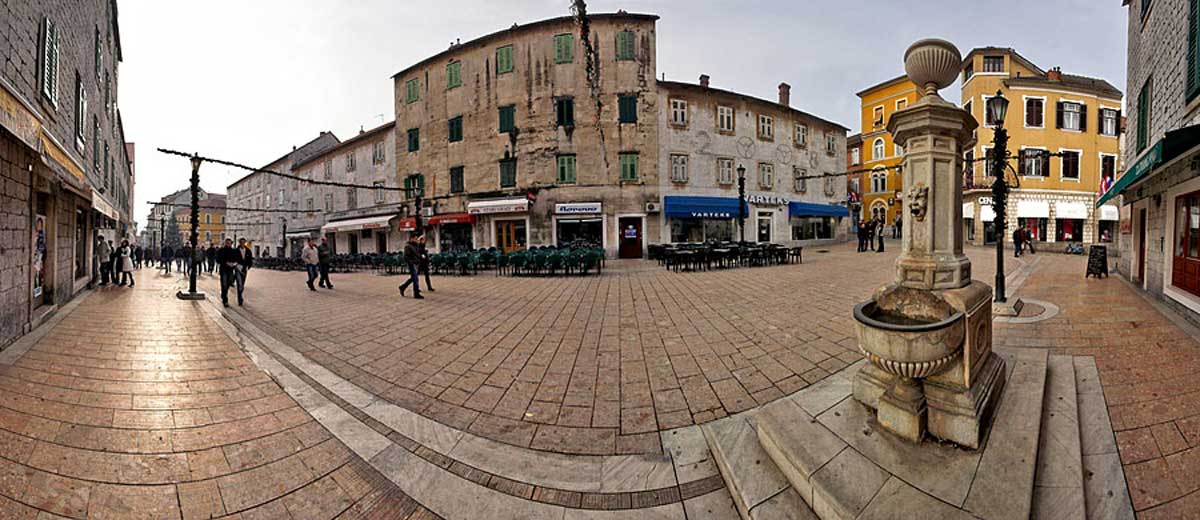
Piazza Fountain
The piazza fountain (popularly known as funtana) was raised by Mayor Antonio Buglian in 1852. A year later the piazza was paved, and street lamps (ferali), the iron lamp-posts, were also placed there.
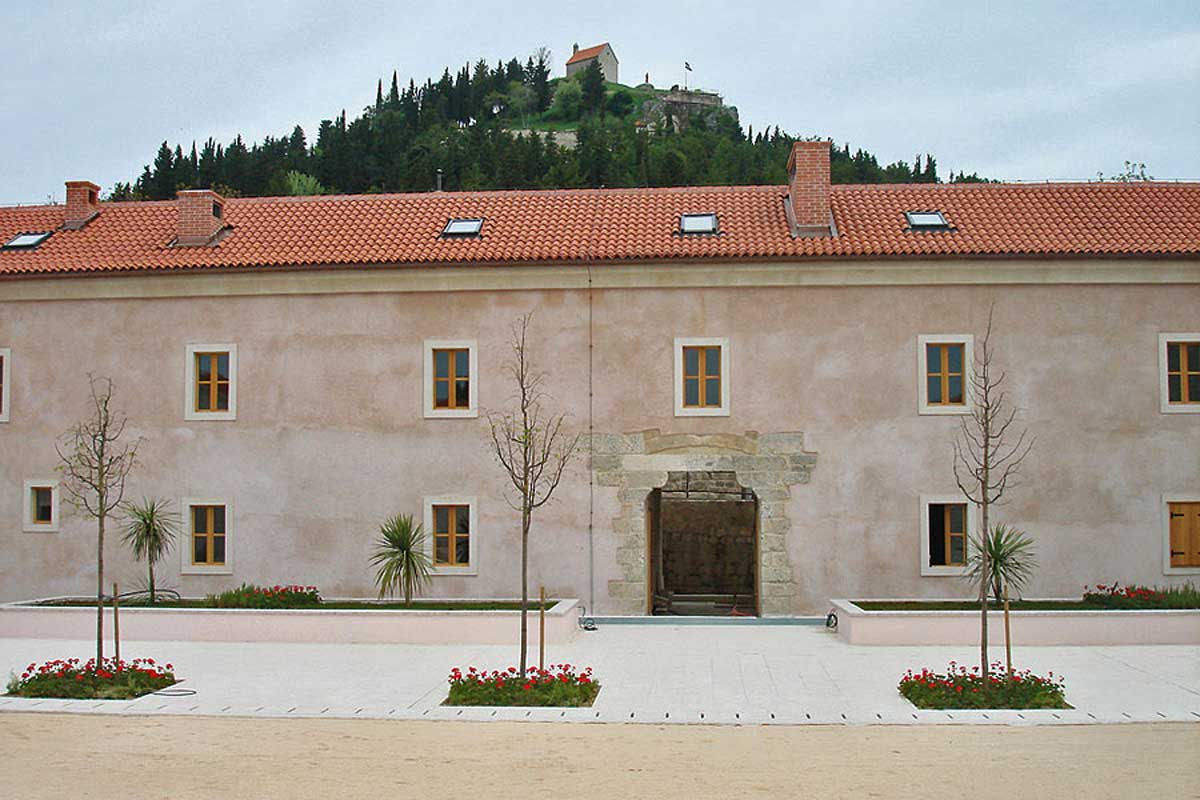
Alka Knights Court (Kvartiri)
The name of the Kvartiri (Fr. quartier – lodging, military camp) is indicative of the fort’s original purpose, that is, the barracks for the Croatian cavalry (Cavalleria croata, Croati a cavallo). It was built in 1760 as a square fort with a two-building complex. Each complex includes two square towers and two inner courtyards separated by the stables. A complex could house four companies of horsemen, together with their horses. Throughout history the fort was used by all the armies present in Sinj, particularly by the French Army in the early 19th century, and the Austrian Army. It was the time when Home Guard three-storey barracks was added to the fort.
Before the Alka Knights Court was built, compulsory protective archaeological research had been carried out in order to get a complete insight into construction and reconstruction work on the fort in the course of the 18th, 19th and 20th centuries. The architectural foundations of the south tower were found, including the water reservoir, the rainfall drainage system as well as remnants of the paving, the flooring and cobble pavements. Fragments of polished and industrial kitchen potteries, glass fragments, numerous ceramic pipes, Venetian coins and objects of metal date from the Late Middle Ages and the Modern Age.The Alka Knights Court (Kvartiri) is cultural property under protection of the Ministry of Culture of the Republic of Croatia.
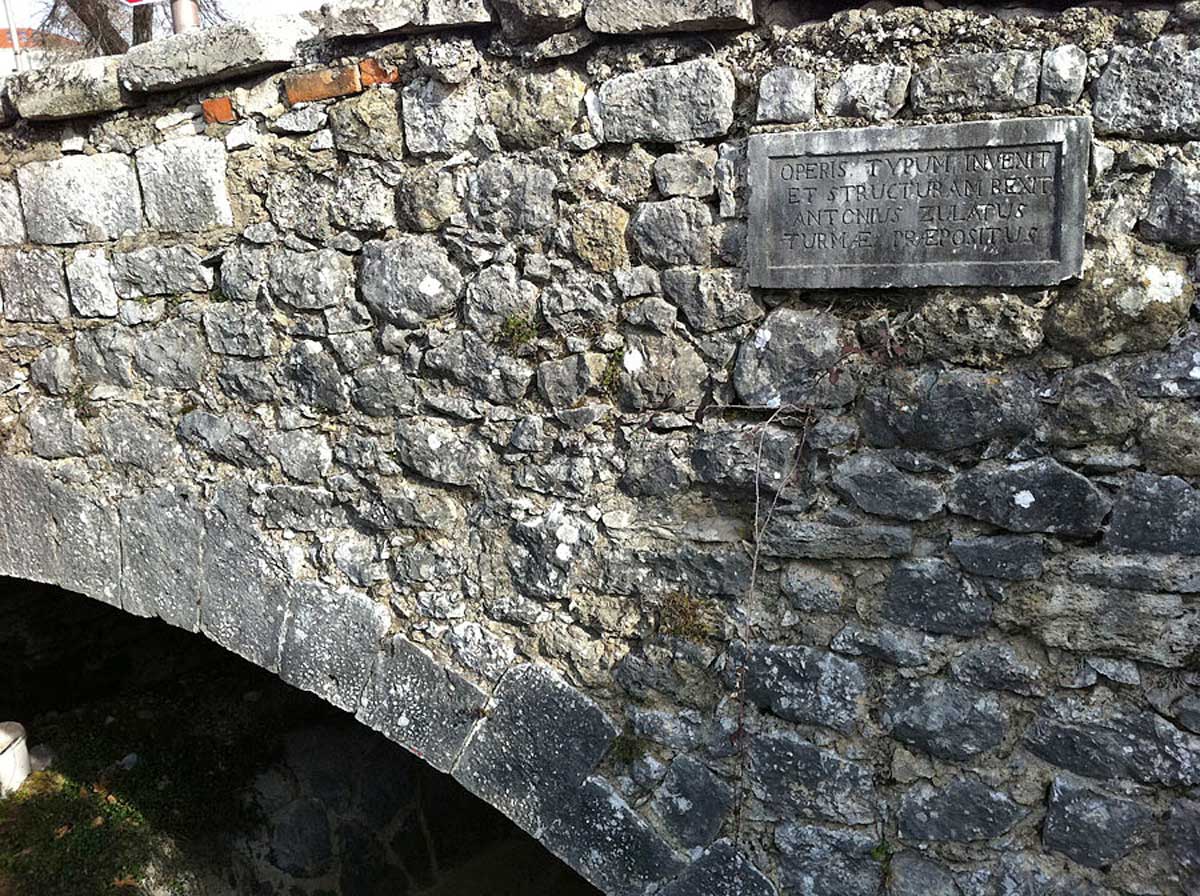
Great Bridge (Alkar's Bridge)
A large bridge over the Gorućica stream, a tributary of the Cetina, was built by Sinj Governor Paolo Emilio Canalis in 1784. Downstream of the Bridge, above an arch cut in bugnato stone, there is a built-in tablet bearing the year of construction and an inscription reading “An ornament to Sinj, comfort to passengers and to the trade benefit”. It is located just off the place from which the Alkari start to gallop, called Biljeg. The Great Bridge ic cultural property under protection of the Ministry of Culture of the Republic of Croatia.
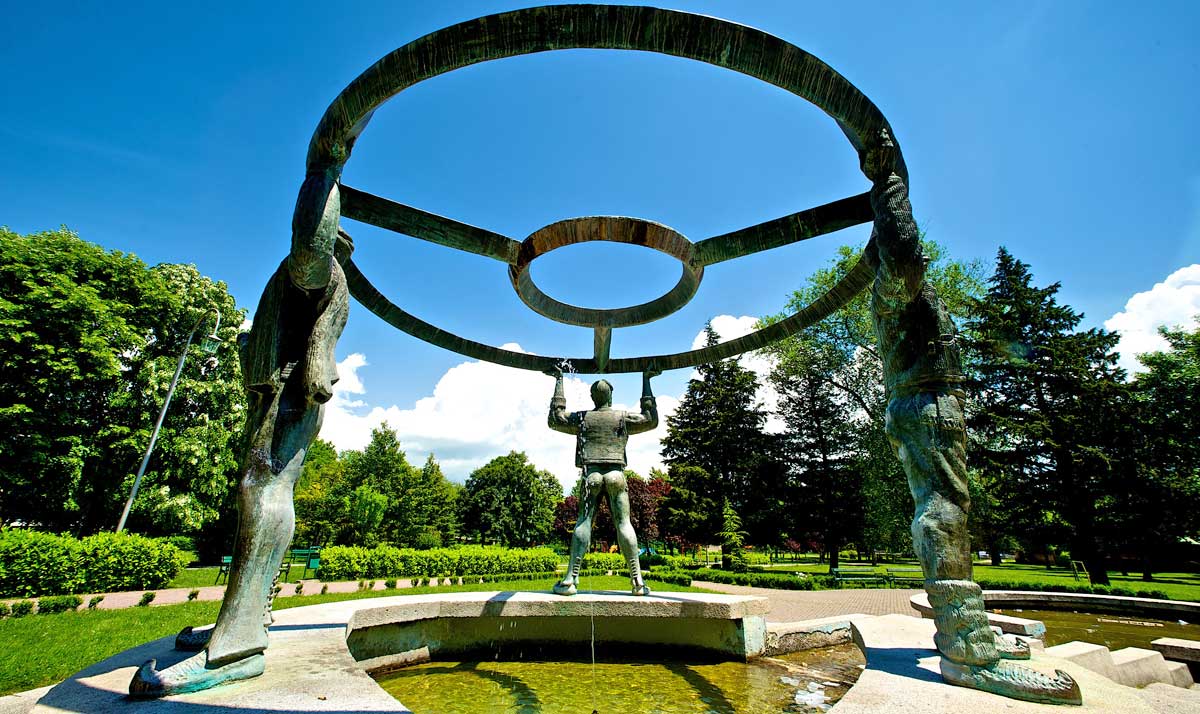
Three Generations Monument
A monumental sculpture with a fountain, by Ivo Filipović Grčić from Sinj, is placed in the centre of the town park. Strongly symbolic, it represents the three men of Sinj holding the alka ring with their arms lifted. They are dressed in men’s folk costumes of Sinj.
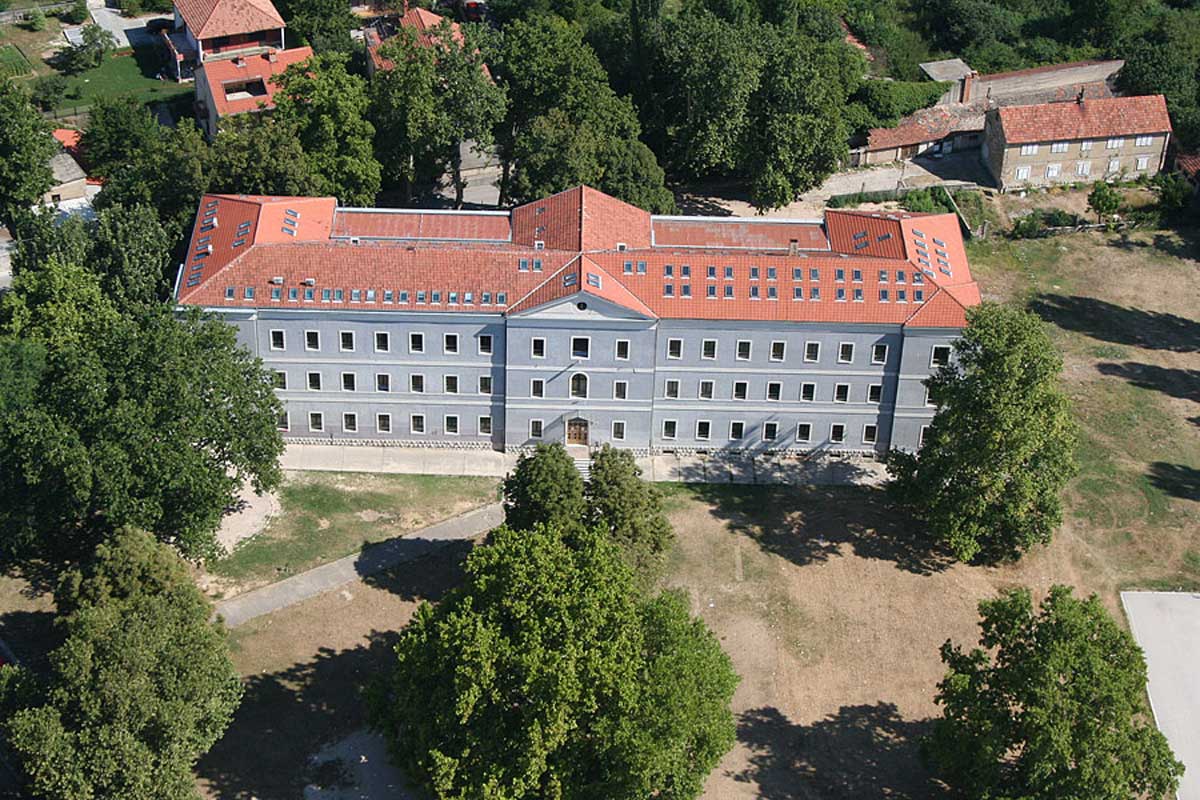
Sinj Franciscan Grammar School with the Public Work Right
As the oldest secondary school in the Dalmatian hinterland, it started work in the academic year of 1838/39, after monastic schools in the three monasteries of the Franciscan Province of the Most Holy Redeemer had been joined. Through the 1854 reorganisation it acquired the right of public work. Sinj Franciscan Grammar School is also the first secondary school in southern Croatia which introduced the Croatian language as a language of instruction. The Alka Knights Court (Kvartiri) is cultural property under protection of the Ministry of Culture of the Republic of Croatia.
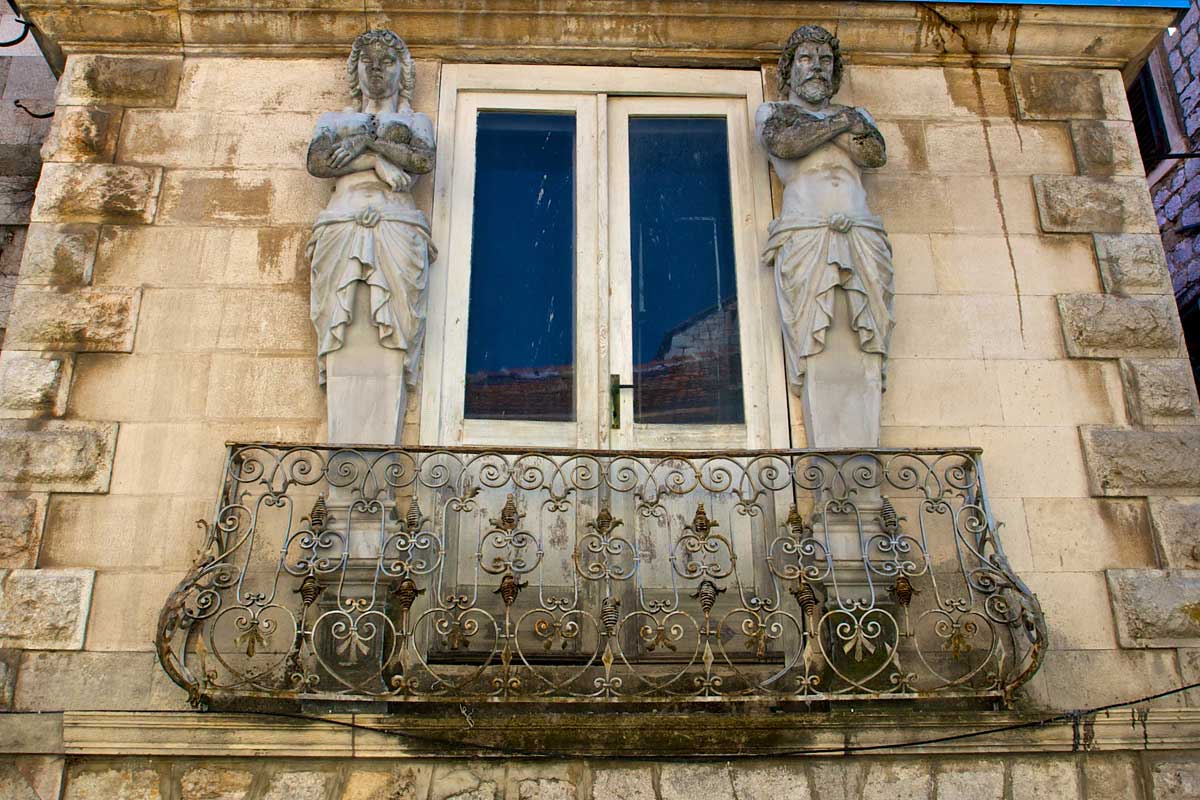
Branko Čović
Danek Villa
A revival-style house in the centre of Sinj was built by the Polish immigrant Adolf Danek. The eastern façade of the three-storey house is ornamented with diagonally-set ashlar blocks and a terrace fenced in a classicist manner, whereas the openings have iron edging. An ornamental prominent cornice is set of the two-storey north wing, whereas a two-wing opening with a wrought iron fence is reinforced with monumental sculptures of caryatid and atlas. There used to be a garden west of the house. The Danek Villa is immovable cultural property under protection of the Ministry of Culture of the Republic of Croatia.
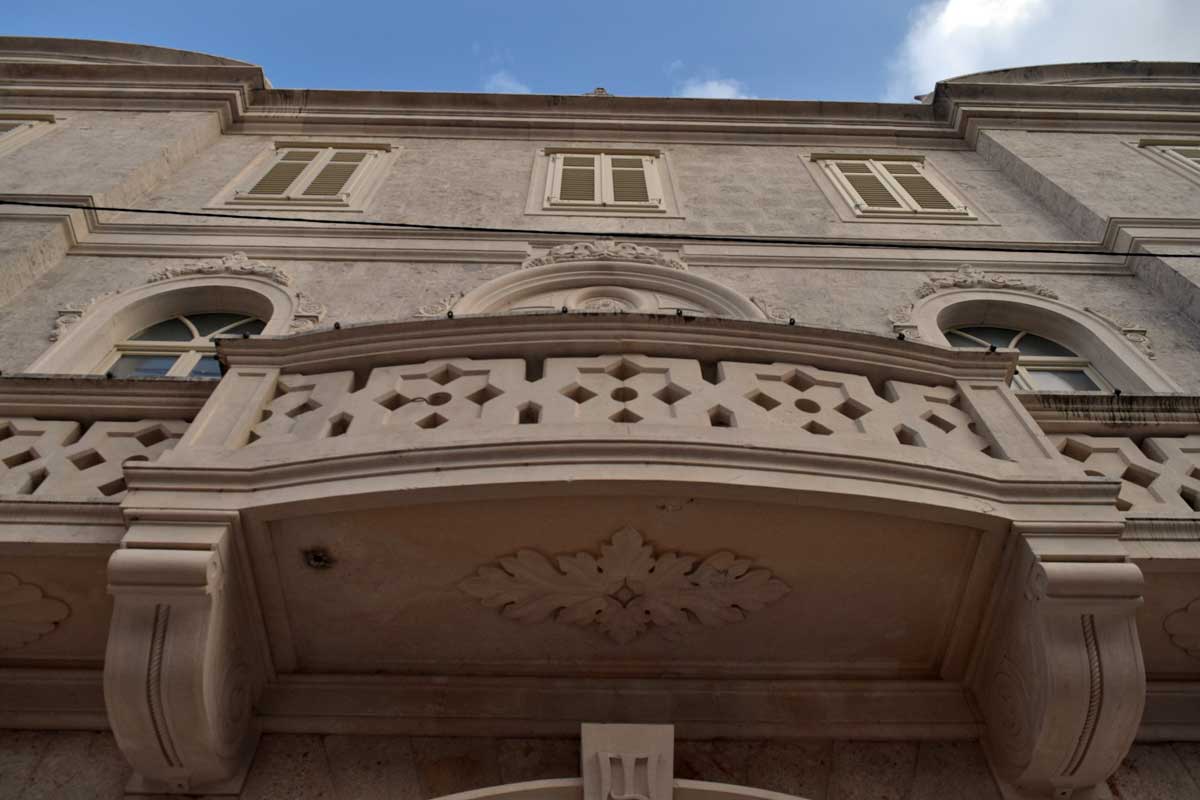
Monika Vrgoč
Tripalo Palace
It was built in the 19th century, in the very centre of Sinj, near the Church of the Miraculous Madonna of Sinj. It is owned by the Tripalo family, a reputable Sinj family.The north façade is richly decorated with ornaments cut in stone – prominent stone cornices, a revival-style balcony, a prominent finishing cornice and an attic with ornamental heraldic fields. The original spatial disposition of the house has been preserved, as well as the first floor inventory from the time when the Palace was built (furniture, curtains, lighting fixtures, wall illustrations). The building has also a large arched basement. A garden, orihinally in baroque, stretches south. There is also a greenhouse. Due to its historical value, the Palace has been given the landmark status. The building bears a tablet on which there is an inscription reading ″The stone from Glavica of St Nicholas near Selci on the island of Brač, the stone-cutter Nikola A. Štambuk. Friendship I cherish more than gold, the door open to a friend in 1883.″
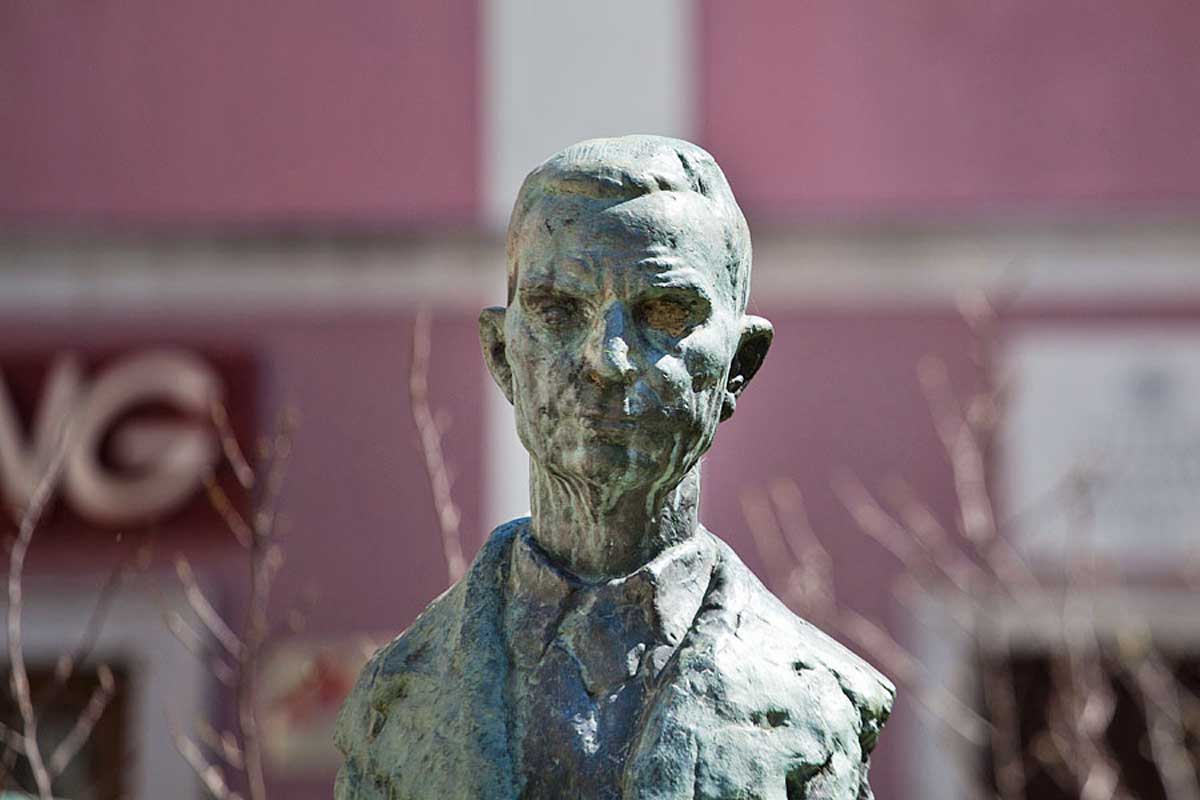
Dinko Šimunović Bust
It was sculptured by Ivan Meštrović in 1932, honouring the special edition of Šimunović’s narration Alkar. At that time, Šimunović was seriously ill and lacking in money so that a group of prominent artists initiated a reissue of his Alkar. They included Vilko Gecan, Joza Kljaković, Fran Kršinić, Omer Mujadžić, Vanja Radauš i Marijan Trepše. Miroslav Kirin was the author of the dust jacket design.
“... Huge Sinj field on the hot summer sun seemed even greater because the bluish mist concealed to the eyes the far away hills. Everything was calm in the midday heat, and the distant, distant mountains of stone became even bluer, peaking still behind that low, thin mist. It seemed as the whole Krajina was in a grand summer sleep, or as it was resting after the angry fight and heroic deeds ...” (an excerpt from D. Šimunović's Alkar)
The Stations of the Cross
The inhabitants of Sinj consider their old fortress town very special because it is more than just a historical centre. A votive church was erected on top of the fortress on the 200th anniversary of the migration of the people of the Cetina region from Rama to Sinj. In front of the church is a statue of the Virgin Mary, the work of sculptor Josip Marinović, whose solemn and majestic gaze watches over Sinj and its surroundings.
The Way of the Cross has been worshipped here since 1996, and a path for it was built in 2001. In the same year, fourteen renowned Croatian sculptors were commissioned to create life-size bronzes representing the fourteen Stations of the Cross. Thanks to various private and institutional funds, and to the delight of believers, pilgrims and travelers, the project was completed and the Sanctuary of the Miraculous Lady of Sinj considered a valuable artistic, cultural, and religious work in which is to be found in the peaceful centuries-old forest.
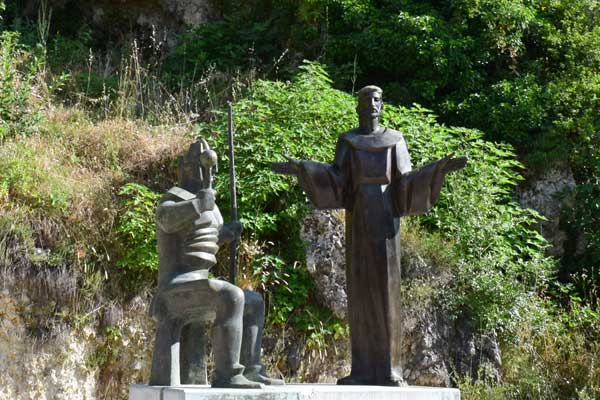
1st station
Jesus is condemned to death
Stipe Sikirica
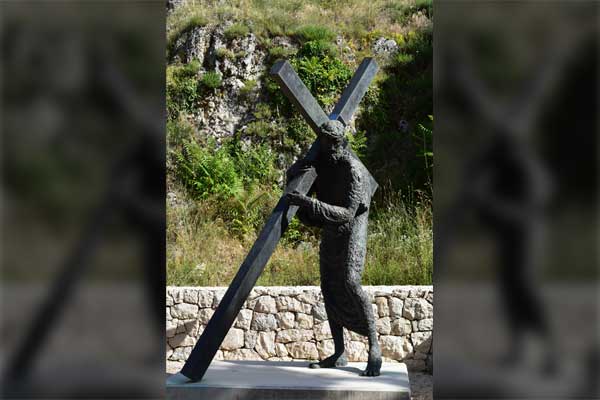
2nd station
Jesus takes up his Cross
Duje Botteri
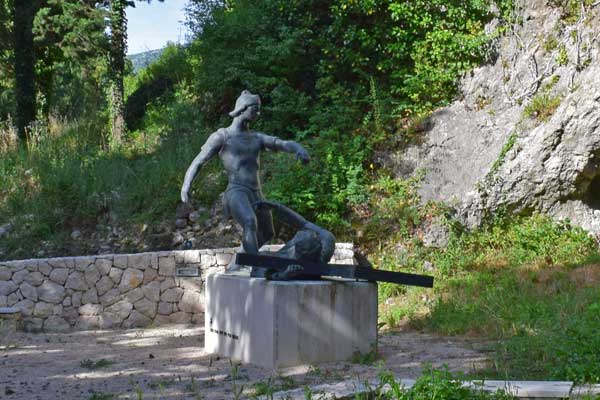
3rd station
Jesus falls for the first time
Ante Starčević
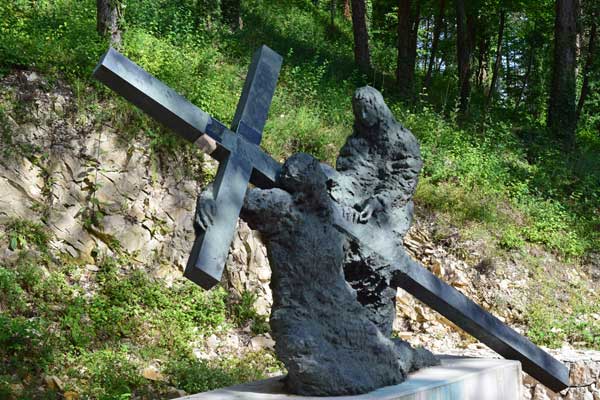
4th station
Jesus meets his Mother
Kuzma Kovačić
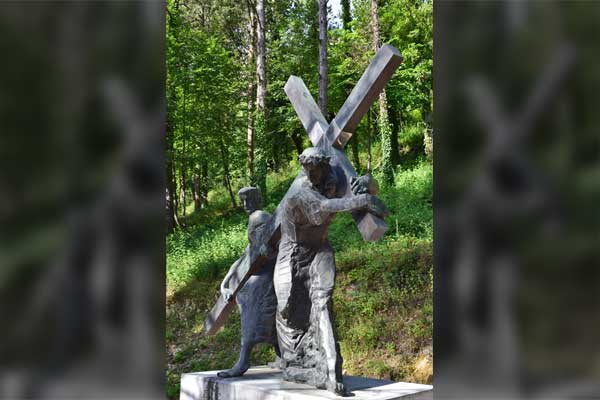
5th station
Simon of Cyrene helps Jesus carry the Cross
Stjepan Skoko
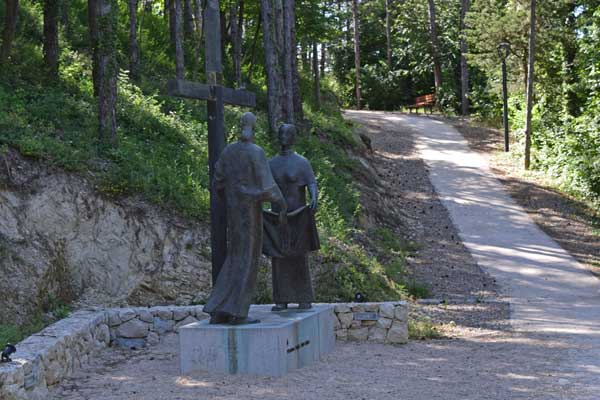
6th station
Veronica wipes the face of Jesus
Marija Ujević
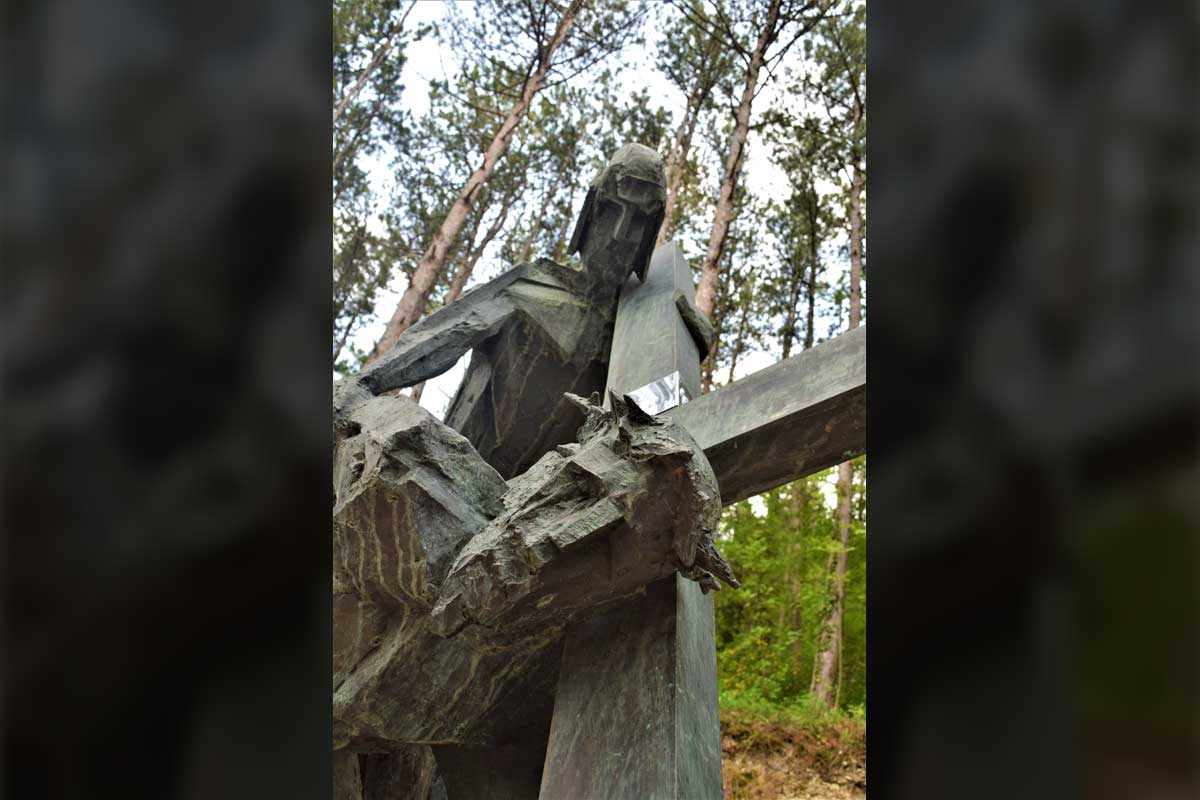
7th station
Jesus falls for the second time
Kažimir Hraste
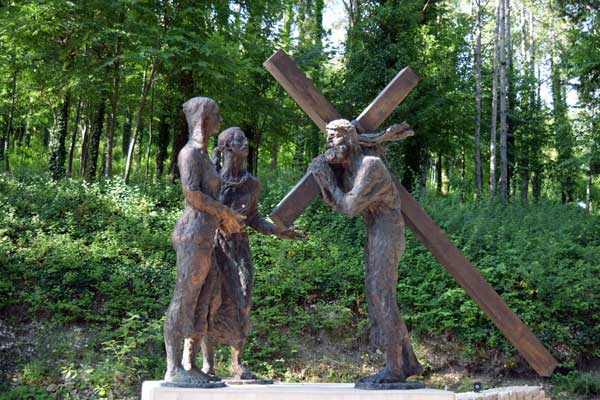
8th station
Jesus meets the women of Jerusalem
Nikola Vrljić
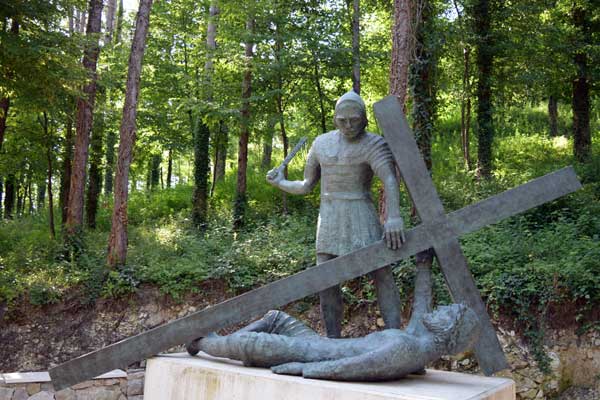
9th station
Jesus falls for the third time
Jure Žaja
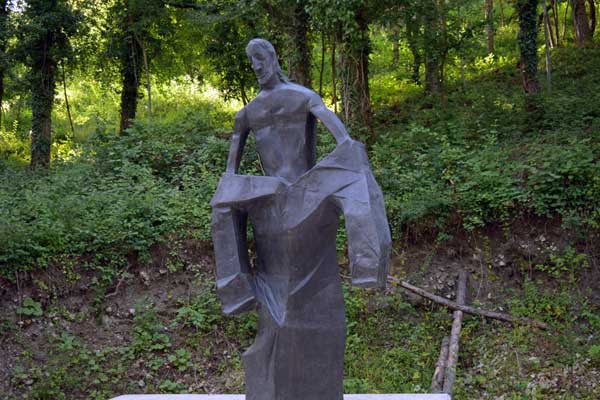
10th station
Jesus is stripped of his garments
Mile Blažević
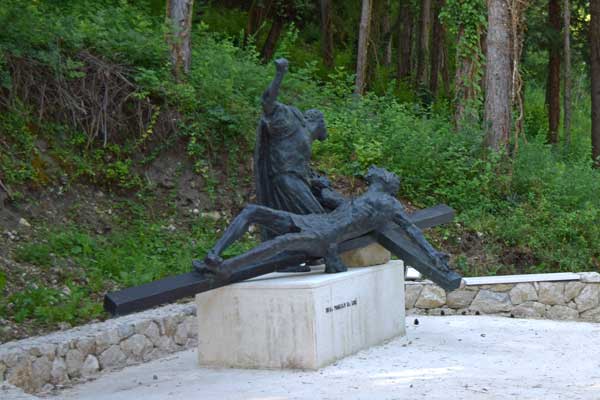
11th station
Jesus is nailed to the Cross
Vene Jerković
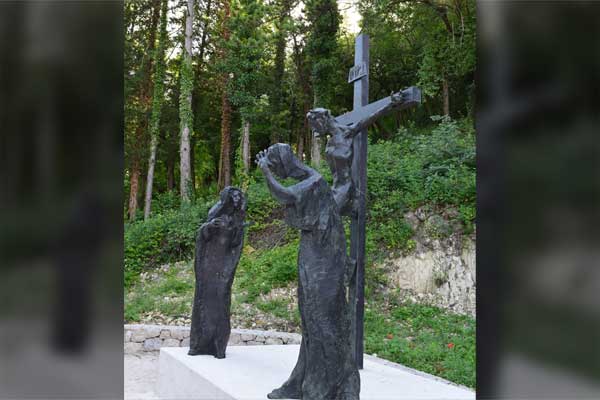
12th station
Jesus dies on the Cross
Ivan Klapež
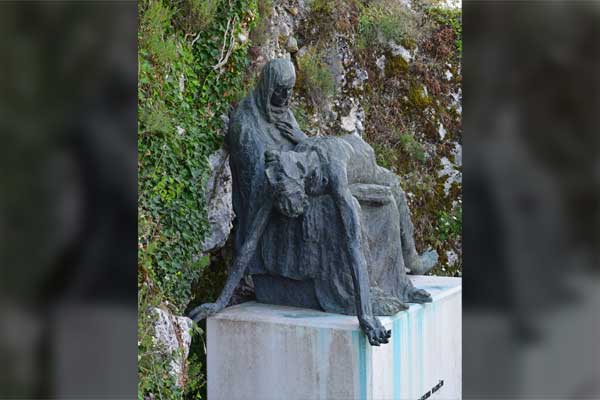
13th station
Jesus is taken down from the Cross
Miro Vuco
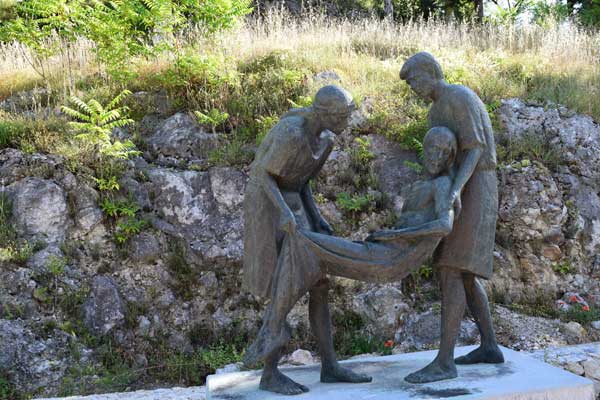
14th station
Jesus is laid in the tomb
Josip Marinović.
Former Railway Station Building
The railway, also known as both rera and ferata, joined Sinj to Klis and Split from 1903 to 1962. It was very significant for Sinj cultural and economic development.
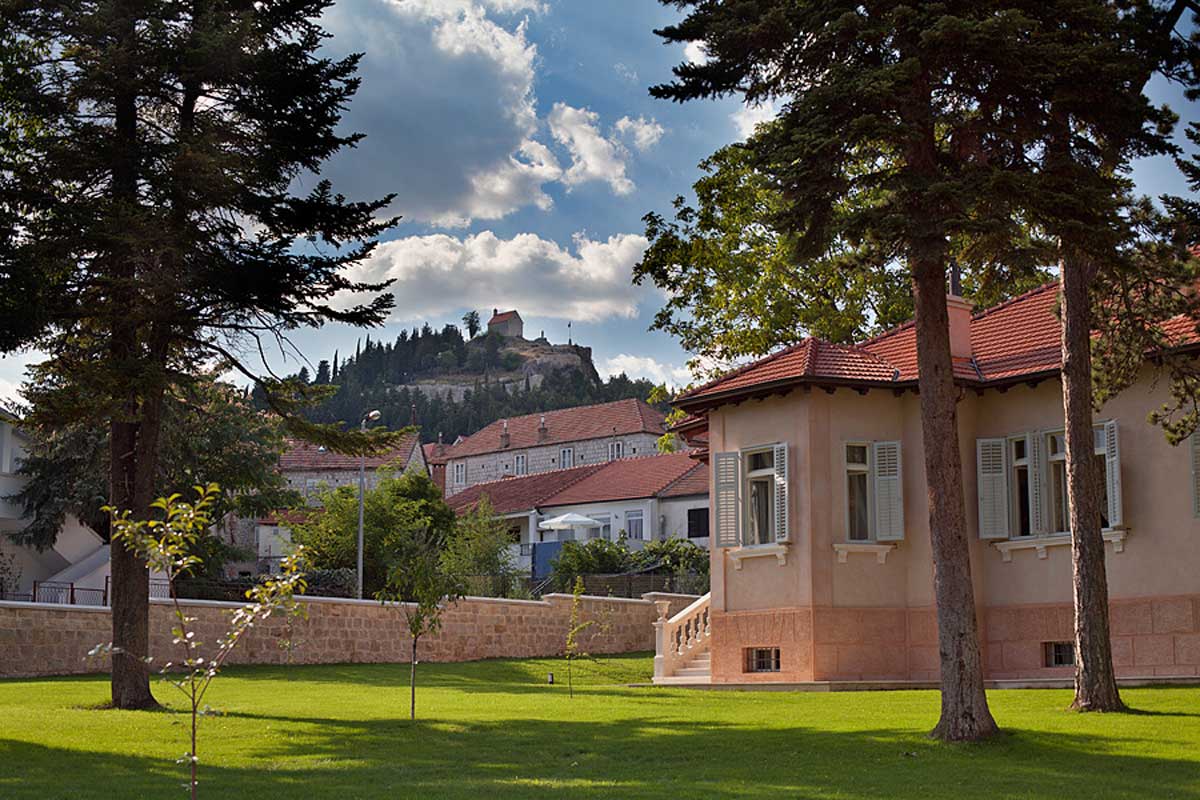
Tripalo Villa
It was raised in southern Sinj in 1920 in Art Nouveau style. The entire property is surrounded by a stone wall. In the north-east part of the villa there is the entrance gate with forged doorframes, dating back to the time when the building was under construction. Although raised in the town, it is a country-style building and is quite exceptional in Sinj, but also in greater Dalmatia. The Tripalo Villa is immovable cultural property under protection of the Ministry of Culture of the Republic of Croatia.
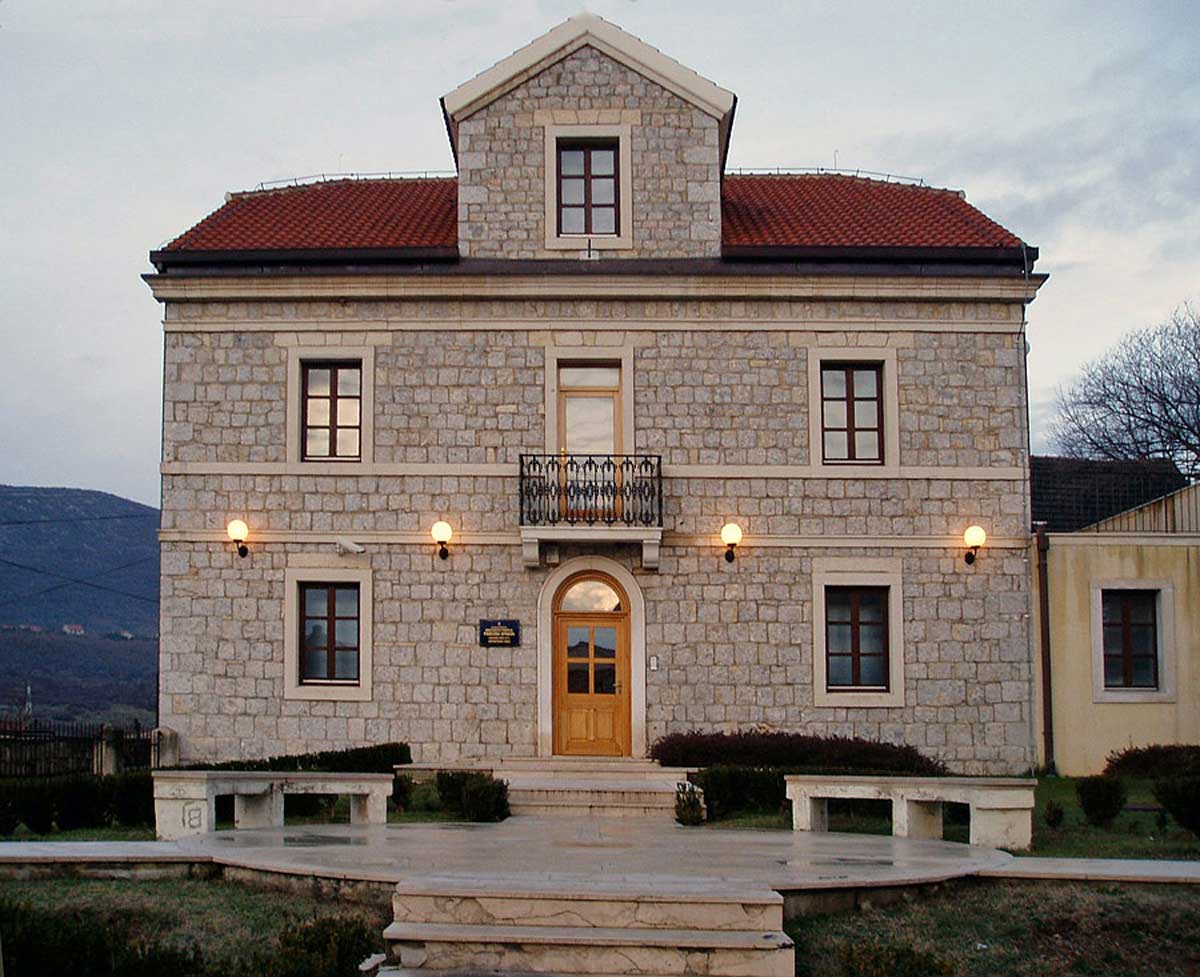
Vjera Villa
It bears the name of the owner. The house was bought by the Tripalo family from the then landowner and lawyer Ramagnolo, for their daughter Vjera on the occasion of her marriage. Sinj Tax Administration office is at present located in the restored villa.
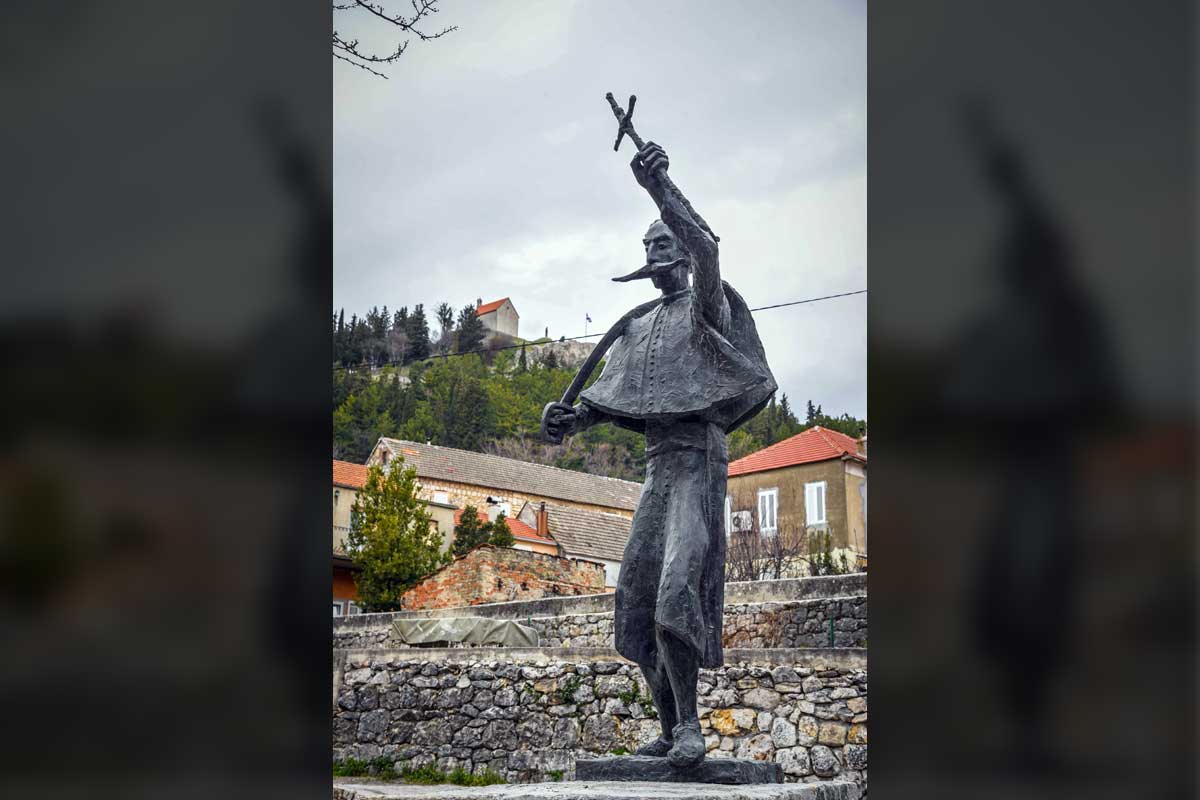
Željko Zrnčić
Don Ivan Filipović Grčić
The name of one of the most important historical figures of Sinj, Don Ivan Filipovic Grcic, a priest, poet and knight, has finally been rescued from oblivion thanks to a bronze sculpture erected in his memory. The statue is holding a cross in his left and a blade in his right hand. It was placed at the north-western edge of the Alkar Palace (Alkarski dvori).
Don Ivan's merits during Sinj’s fight for freedom against the Ottoman Empire are of inestimable value. At the beginning of the Great Turkish War in 1685 he was mentioned as a highly respected leader of a large group of men from Cetinska krajina, with whom he renounced allegiance to the Ottomans and went to Solin. He also participated in battles in the south of Croatia. After the liberation of Sinj in 1686, he returned to his hometown where his brother Mate shortly after became the leader (harambosa) of the rebellious hajduks (hajduci) - a gang-like grouping of outlaws, highwaymen, looters, and partisans who fought against the Ottoman Empire’s reign in Croatia. Due to his service Don Ivan received the Order of Saint Mark and therefore the Order of Chivalry of the Republic of Venice. It was given to him by the Venetian doge of the time (title of an elected lord and Chief of State in several Italian city-states, during the medieval and renaissance period).
In 1704 he republished the "Words of Divković " (Divkovicebe besjede), but in the Ikavian language variety (ikavica). In addition, he published his own liturgical hymn which he entitled "The hymn that is sung according to the Apostolic Letters (Epistle) during the service on every fourth Sunday of the month. In some regions, this church service is called 'Mlada nedilja'.”
Courageously the leader stood up to the Ottoman representatives in the battle of 1715 and resolutely refused to surrender the city to the enemies. It is assumed that he is buried in today's community of Klis, about 10 km away from the harbour city Split.
Zorzi Balbi, who was a Dalmatian governor during the Venetian rule, mentioned Don Ivan in his "Diary of Siege" (Dnevnik opsade). Don Ivan's popularity among the people is also testified by the words of our greatest folk poet, Andrija Kačić Miošić, who immortalized him with the verses:
O, you poets and horsemen from Cetina
Especially you Don Ivan Grcic,
Cetinas knight at heart
Who challenged the Turks to battle,
You split their skulls open
You subjugated the Turkish border,
You freed the slaves and put the enemy to flight.
Andrija Kačić Miošić dedicated an entire song to the heroism and noble character of Don Ivan, "the knight of the Venetian doge, who was noble at heart" (kavalira dužda mletačkoga, koji biše srca viteškoga). The title of the song is “The song of the great hero and knight of Sinj, Don Ivan Filipović, also known as Grčić, which is presented to the venerable father Petar Filipović " (Slidi pisma velikoga junaka i viteza kavalira dom Ivana Filipovića rečenoga Grčića, ispod Sinja, prikazana ocu poštovanomu fra Petru Filipoviću, štiocu bogoslovcu.)
"May Jesus Christ always come to our rescue, day and night, as well as the holy trinity and the Virgin Mary, our patron saint, and the saints Jerome, George and Elijah. May these defenders of our protectorate Bosnia, Herzegovina, the Croatian people and all the saints of the Slavic people and the Croatian language, pray for us."
(Original text: Svagda nam bilo Ime Isusovo u pomoć, i ob dan i ob noć, i Prisveto Trojstvo i Divica Marija naša pomoćnica i Sveti Jerolim, Sveti Juraj Mučenik, Sv. Ilija, naše zemlje protekturi, Bosne, Ercegovine, Hrvata i svega slavnoga slovinskoga naroda i jezika hrvatskoga, molite se za nas.) Don Ivan Filipović Grčić
Hymn which is sung according to the Apostolic Letters (Epistle) during the church service on every fourth Sunday of the month. In some regions, this church service is called 'Mlada nedilja'. Sinj, Venice 1704
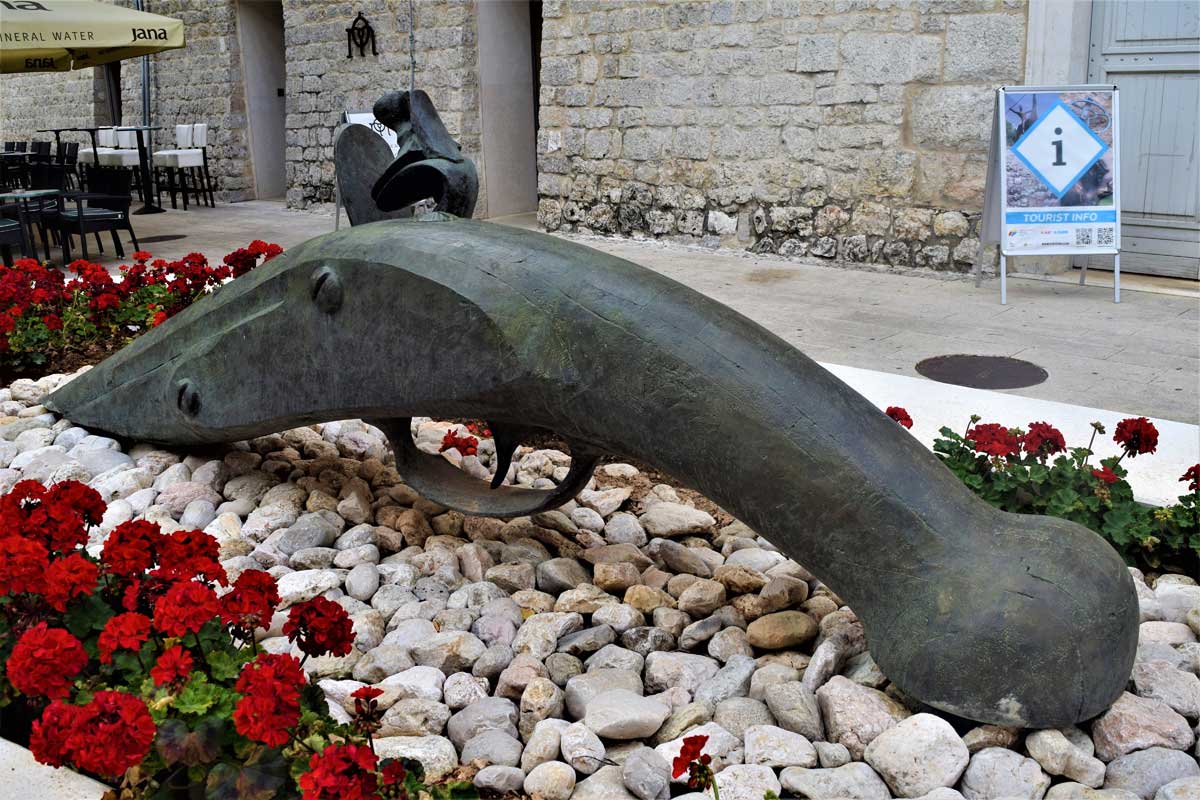
Monika Vrgoč
The Kubura (A Turkish flintlock)
The bronze sculpture Kubura 1716 (a small muzzle-loading short gun from the Ottoman Empire) created by the Croatian sculptor Kažimir Hraste during the art workshop of Galerija Plamenac in 2014, was placed in front of the Alkar Palace. The imposing artwork is ten times bigger than the original Kubura which was discovered at the fortress of Sinj. It measures 3.6 m in length and 50 cm in width.
The artist worked on his creation for almost a year and decided to donate it to the city Sinj for the occasion of the 300th anniversary of the victory over the Ottomans, which is considered a miracle.
The artist himself describes his work as follows:
"The Kubura was created during the sculpture or art workshops which had been organized by the Galerija Plamenac in 2014. I wanted to create something but this 'something' needed to be visibly bigger. So, I came up with the idea to produce a Kubura. However, I only wanted to create the centre piece of the firearm which in my opinion is the most interesting component, whereas the rest of the weapon gives the impression of being submerged in the earth. My aim was to capture the spirit of the weapon. What inspired me to create this piece of art in the first place was the deadly function of the weapon. However, the elements were solely created for aesthetic reasons, for the sake of art, so to speak.”
Pavića nebesa - Sinj’s favorite promenade
Sinj’s promenade, Pavića nebesa, also known as the lungs of Sinj, is only a 20 minutes-walk away from the city centre. The promenade, with its elaborate pedestrian walkways, offers an incredible fairy-tale contrast to the urban Sinj. European black pines make most of the thick forest along with its amazing water springs and its rich flora and fauna.
The Tourist Board of Sinj has contributed to make this little heaven even more accessible to visitors by setting several benches along the forest tracks as well as a birdwatching station since this area is home to many diverse bird species.
Birdwatching enthusiasts!
Relax and admire in peace and quiet the various species, such as the common wood pigeons, orioles, or sandpipers. Listen carefully to the hoot of the beautiful owls, especially the long-eared owl or the mating call of the blackbirds in its natural habitat. This spectacle of nature confirms all the more Sinj’s commitment for a sustainable tourism.
The tranquillity, the soothing green of the dense treetops and the forest clearings make this natural area a perfect place to escape the noisiness of our hectic and stressful everyday life.
Enjoy what you deserve: a return to true nature, a moment in time inside the deep fascinating forest.
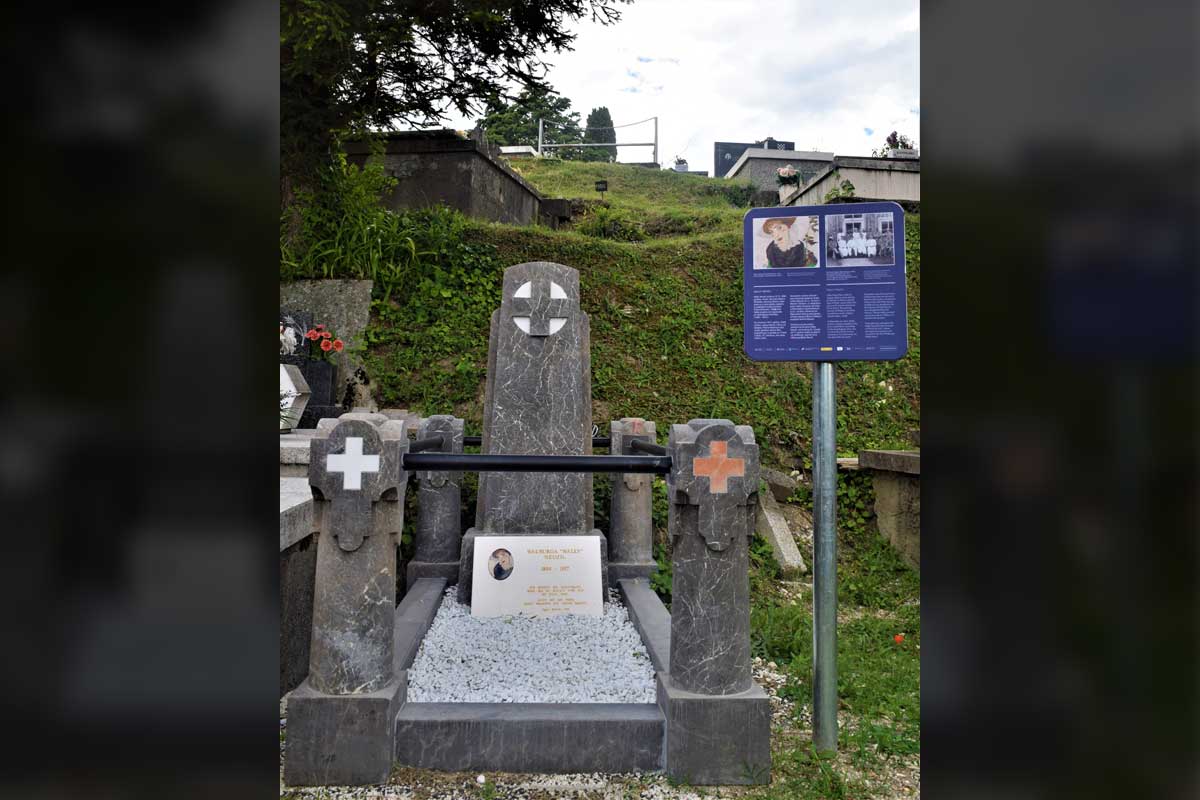
Monika Vrgoč
The Portrait of Wally
The Portrait of Wally tells one of the most inspiring love stories of the early 20th century. The woman depicted in the oil painting, Walburga “Wally” Neuzil (born on August 18th, 1849), was the muse and lover of the famous Austrian painter Egon Schiele. She was buried at the town cemetery of Sinj, called Groblje sv. Frane.
Schiele, a major figurative painter of Art Nouveau and student of the famous Gustav Klimt, created some of his most famous paintings thanks to his love and muse: Wally. Portrait of Wally is one of his masterpieces with an estimated value of 20 million dollars. Today, it is exhibited in the Leopold Museum in Vienna.
In 1911, Walburga “Wally” Neuzil became Schiele’s model, but she was much more than that. Wally was his lover and loyal companion until the spring of 1915. She worked as a cashier, a sales assistant and as a model in a clothing store. She was always immensely supportive of Schiele in his times of personal crisis, even during his imprisonment in April 1912.
In 1915, Schiele leaves Wally to marry Edith Harms, a middle-class woman. The slightly hurried marriage was due to Schiele being inducted into military services in the combats of the First World War. In 1918, Schiele as well as Edith died in Vienna of the most contagious epidemic at the time, the Spanish Flu.
Wally, however, surpassed the unexpected emotional shock thanks to her mental strength and her optimism. She trained as a nurse and worked at a military hospital in Vienna. In 1917, she volunteered to work in the war zone of Dalmatia, where she died of scarlet fever in the military hospital in Sinj on December 25th. Two days later, on December 27th, she was buried at the municipal cemetery Groblje Sv. Frane, according to the death register of the Citizens Registrations Office of Sinj. The Austrian junior lieutenant Franz Schön, with whom Wally, according to some unconfirmed sources, had a romantic relationship, was buried directly next to her.
Art connoisseurs will say that Wally was more than a model and a muse who inspired the painter – her captivating gaze fascinates every viewer of her portraits. Her contemplative glance reflects her serenity and inner peace. She looks at her viewers in a calm, slightly interrogative manner, inspiring them to reflect upon themselves. It is due to this particular look in Wally’s eyes, so similar to Leonardo da Vinci’s Mona Lisa, that the portrait was dubbed the Viennese Mona Lisa.
The entire restauration and reconstruction work of the tomb were executed by the company Statua j.d.o.o. under the guidance of Marijo Čelik, and the epitaph was donated by the company Mramor Granit Marović d.o.o., under the management of Branimir Marović. The Austrian sculptor Bruno Walisch created her porcelain portrait. The tomb was restored with funds of the Wally Neuzil Association, founded on March 23rd, 2017, whose objective it is to research and commemorate the life of Walburga “Wally” Neuzil.
Peškarija – more than just a market
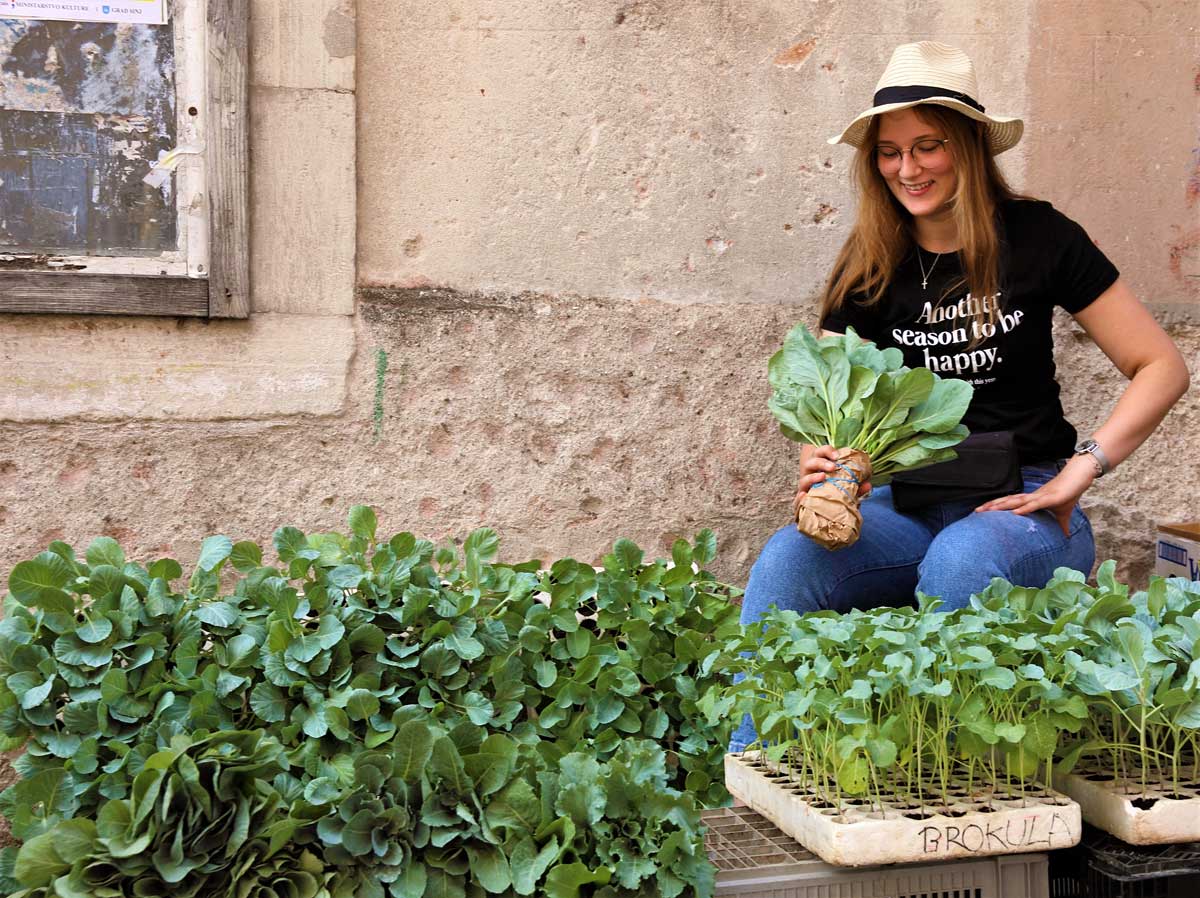
Ante Žižić
If you are visiting Sinj for the first time, especially on a Saturday morning, you don’t need a map to find the so-called peškarije (the term derives from the Italian “pescheria”, meaning fish market). Simply follow the crowd and the hubbub of voices and sounds that will lead you to the traditional and very popular farmer’s market (zelena tržnica) of Sinj.
As you can see from the name “peškarija”, the long reign of the Venetian Republic has left its traces in the language of the region, but don’t be fooled: at the peškarija, you will find plenty of specialties other than fish, especially locally cultivated fruit and vegetables.
Doctors and medical experts consider the Mediterranean diet as highly beneficial to our health. Here, a vast variety of Mediterranean foods are displayed for you on the counters – a potpourri of pleasant scents and colours.
Every potato, every onion, every single chard or lettuce leaf and every head of cabbage were grown with lots of love and patience by callused hands.
You will also find honey produced by bees living in the meadowland and the mountain pasture of the area as well as eggs from chickens which spend their days outdoors in the sunlight and plenty of other precious products without GMO (genetically manipulated organisms) of which we are very proud.
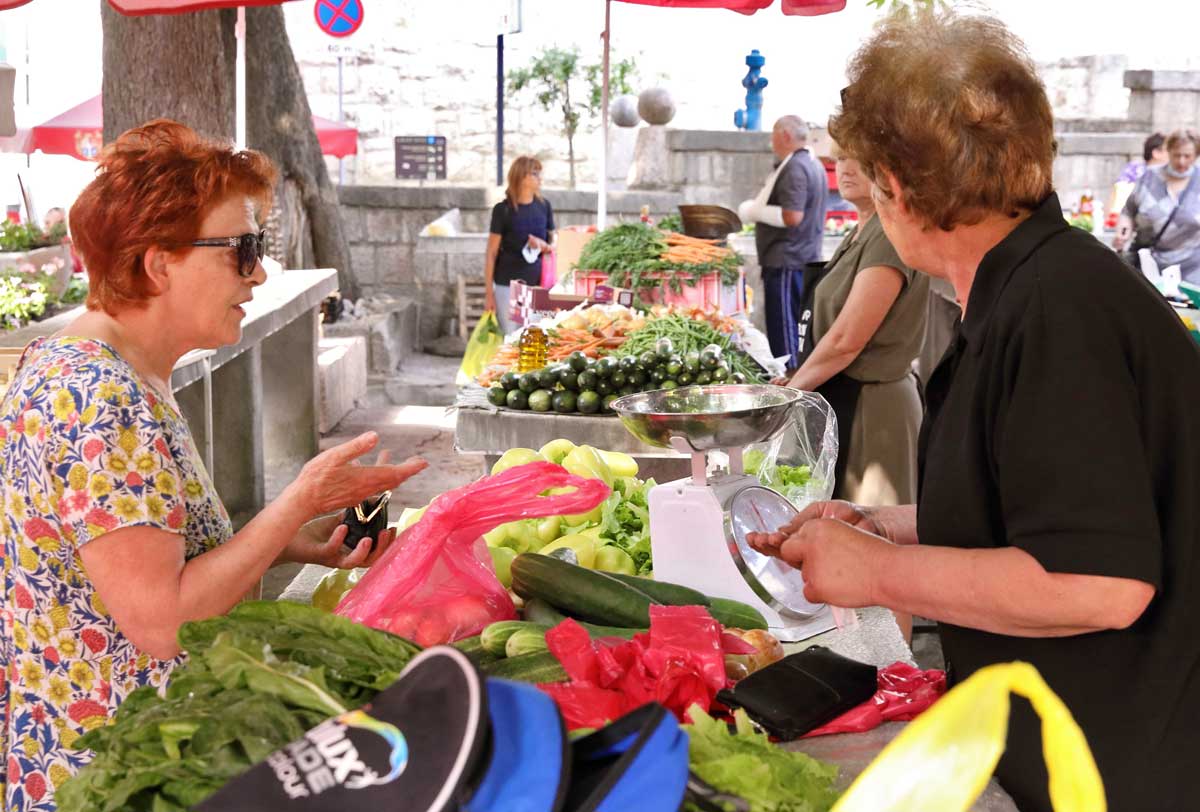
Ante Žižić
Always with a smile on their faces, the vendors will assure you that you will find neither pesticides nor artificial additives in their products, which are grown regionally and ecologically on fertile soil, warmed by the Dalmatian sun and irrigated only with water from the river Cetina.
One thing is for sure: nothing you will find in a supermarket can match the quality of the traditionally manufactured goods of Sinj.
Once you are done with your shopping, treat yourself to a relaxing break in the shade of the treetops while having a chat.
The peškarija has always been and remains more than just a market. It is a way of living, a tradition handed down from one generation to the next, from the coast to the beautiful hinterland of Dalmatia.





